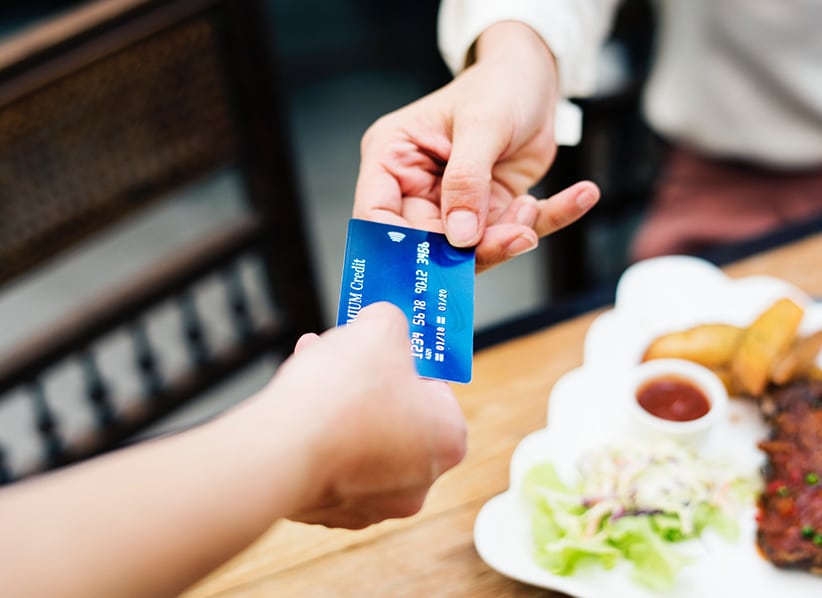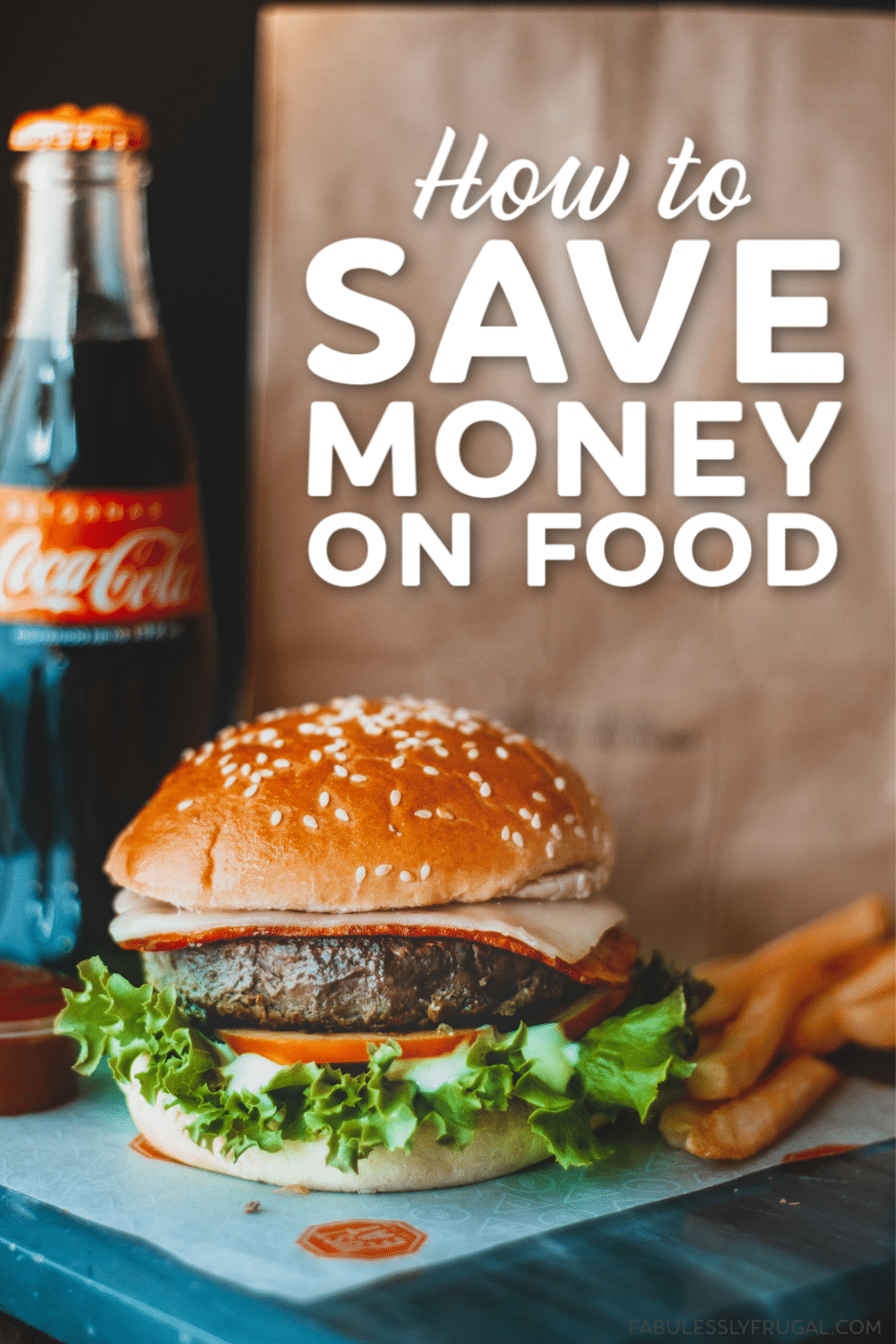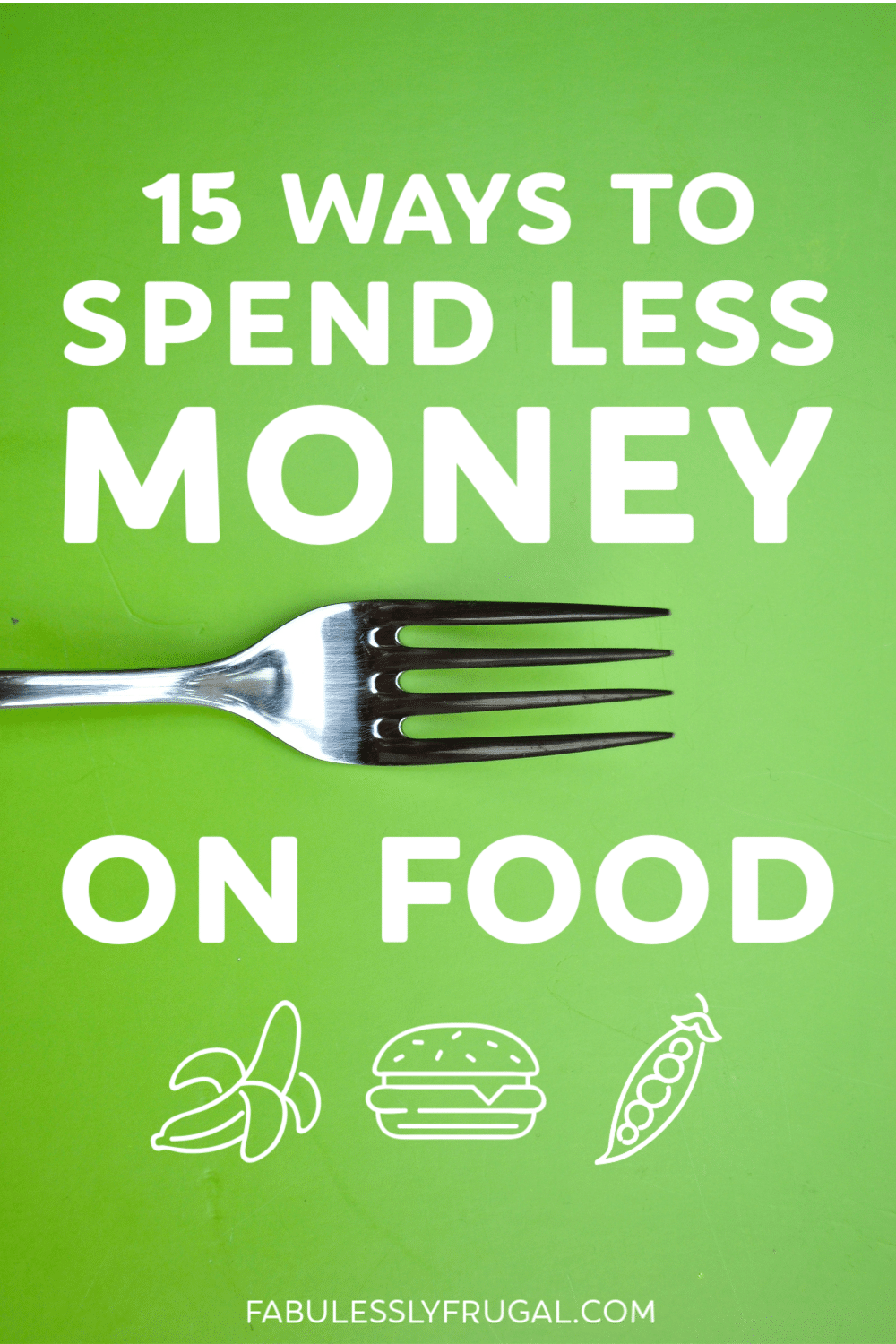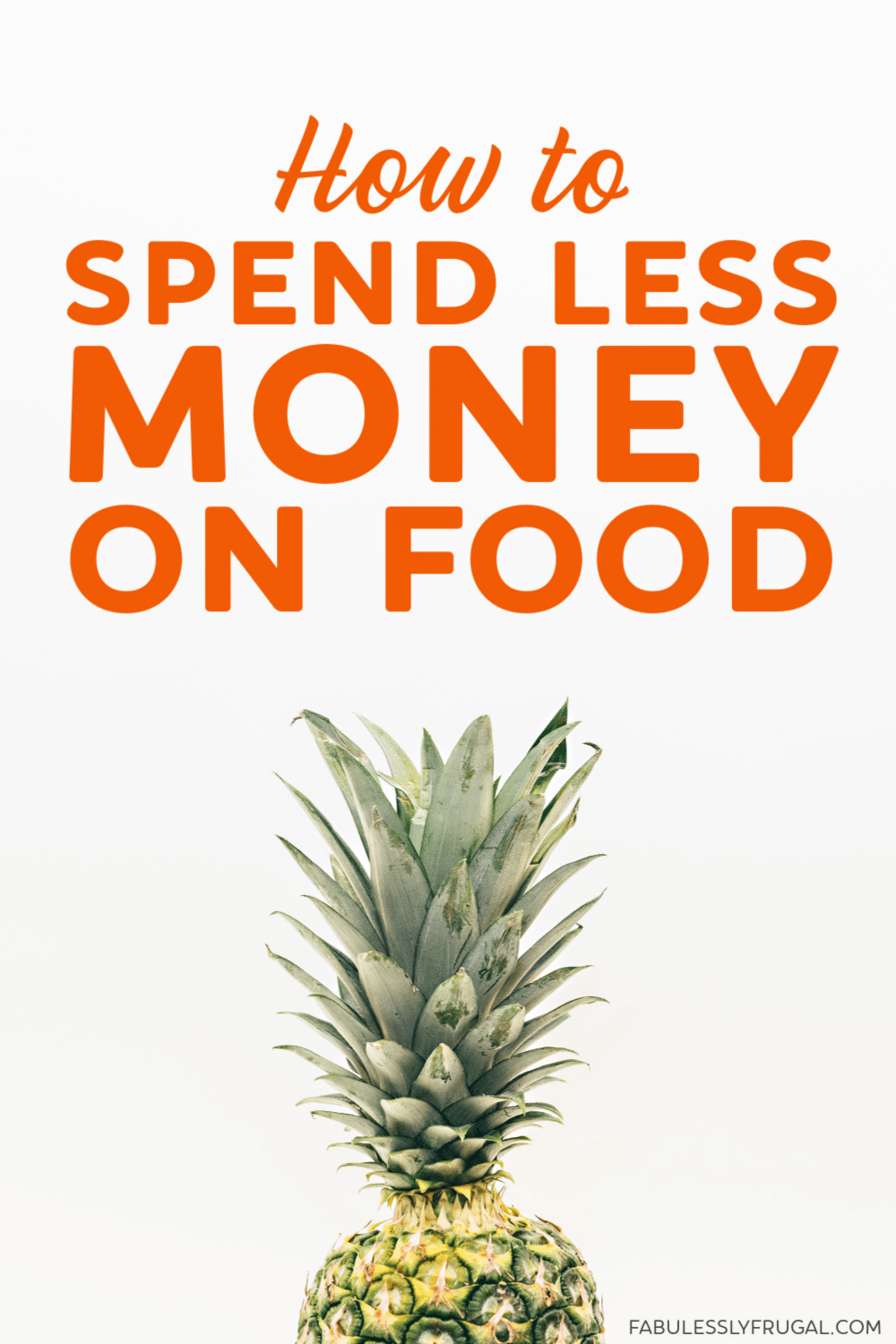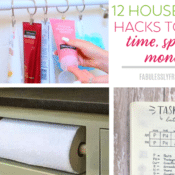How to Spend Less Money on Food (But Still Eat Well)
Do You Love Food?
Spending money on food is easy. We need it to survive, eating is extremely enjoyable, and we’re constantly being bombarded with ads for new trendy drinks and fast-food restaurants every single day.
For all those reasons (and more), learning how to spend less money on food can be quite a challenge. I mean, how are you supposed to cut back on your food spending when you live a busy life and those fast food places are calling your name?
No matter how difficult it may seem, it IS possible for you to save money and stop spending so much on food. It just takes a bit of work to get there, starting with step one…
Finding the Source of the Spending
Have you ever opened up your credit card statement for the month and wondered how so much of your money went toward food purchases? Seeing those grocery bills, small coffee shop visits, take-out bills, and restaurant purchases all added up can be overwhelming, surprising, and stressful all at the same time.
See, the thing is, “Food” is a pretty big expense category, so it has multiple sub-categories. It includes your grocery purchases, restaurant visits, take-out, coffee runs, fast food, and everything else that ends up in your belly.
Because there are so many sub-categories, it can be hard to pinpoint exactly where you’re overspending without actually looking into your past purchases. For example, you may be super on-budget with your grocery shopping, but you may also be spending way too much money visiting restaurants.
To figure out exactly where you’re money is going, break down your food purchases from the last 6-12 months into these five categories:
- Groceries
- Restaurants
- Coffee shops
- Fast food
- Everything else
To make this easy, download an app like Mint or Personal Capital and it will do most of the spending categorization for you. This can be extremely helpful!
Once you’re finished and you know where you tend to overspend, you’ll be able to apply the tips below much more effectively. You’ll also be more aware of where you’re potentially wasting money.
How to Spend Less Money on Food
1. Create a Budget
Even if you don’t create a massive in-depth budget to cover all of your expenses, it’s worth it to create a grocery/food budget to help curb any overspending issues. What type of budget you end up using is up to you, but I highly suggest using the cash envelope system as it makes overspending nearly impossible.
However, if that budget method doesn’t work for you, try setting up this simple 5-step budget or using this really effective multiple bank account budget instead. The important part is to just have something in place.
2. Start Meal Planning
One of the most stressful things and the number one cause of most take-out food purchases is not knowing what to make for dinner and/or lunch every day.
If you wait until the day-of to think of what to make, there’s a good chance you’ll just end up buying something instead to save time. That’s why it’s SO important to do consistent meal planning.
Planning your meals in advance means you’ll know exactly what you’re going to make each day for the rest of the week (or longer, depending on how far you plan ahead). Plus, you’ll know exactly what to get from the grocery store which can help stop any impulse purchases.
One of my favorite ways to meal plan as of recently has been with an app called Prepear. Prepear allows you to meal plan directly in the app, plus you can store recipes, browse new recipes, create a shopping list within the app, and more. It’s SO awesome!
Check out my full Prepear review and also make sure to read these meal planning tips for more insight!
3. Start Meal Prepping
After you do your meal planning for the week, meal prepping is the extra step that can save you even more time and money. See, instead of preparing all of your meals the day you plan on eating them, try preparing some of them in advance so that you can just heat them up when you need them.
For example, you could take Sundays to prepare all of your lunches for the week. Then, before you leave for work, just grab a Tupperware full of delicious food and you’re good to go!
4. Make Freezer Meals
Another way to completely change your food-spending habits is by making freezer meals. Freezer meals are the ultimate savior when you have a REALLY busy day and you just have zero time to make dinner. They can also be super helpful when you have a day or week where you forget to meal prep.
See, usually, if you had nothing to eat and no time to make anything, the obvious option would be to order-in or go out to eat. BUT, with a healthy freezer meal on hand, you can just heat it up and enjoy a delicious and quick feast.
5. Finish What You Have
Did you know that over a billion tonnes of food are lost or wasted each and every year? Too many people let food go to waste because they either buy too much or they forget about it before they get a chance to eat it.
If you want to start spending less on food, start eating the food you already have on hand and save any leftovers for lunches. You can even try new recipes to use up your extra ingredients.
Once you cut down on your food waste, you won’t have to visit the grocery store as often and you’ll be throwing away less money every year.
6. Organize Your Kitchen
Continuing on from the point above, we talked about how a lot of people let food go to waste by simply forgetting about it. The number one solution to that problem is to clean and organize your kitchen and pantry.
I don’t know about you, but I’ve looked through my fridge sometimes and found food that I forgot I had in there! Things can get pushed to the back of the fridge and forgotten so easily.
Here’s how to get organized:
- Take the time to go through everything in your fridge, kitchen, and pantry area
- Throw out anything that’s gone bad
- Organize everything else into designated areas
Once everything is placed in its rightful area and easily visible, you’re going to LOVE how much easier it is to create a grocery list. You can just quickly scan everything, write down the essentials, and then go shopping.
7. Pack a Lunch
Ok, you’ve probably heard this tip a million times before but hear me out! Although it may seem like packing lunch is more trouble than it’s worth, it will cost you about half as much (or less) as it does to buy lunch every day.
The downside of packing a lunch is that it’s a bit less convenient, but I think the trade-off is worth it if you’re trying to save money. Plus, we’ve already talked about a couple of different ways you can save time making lunches by meal planning & prepping, so it’s worth it to give it a shot.
8. Cut Down on Meat
If you’re like most people, you consume a lot of meat throughout the year. (Don’t worry, I’m not about to tell you to go vegetarian!) While this is usually fine, meat is more expensive than plant-based foods, so using it often can really increase the cost of each of your meals.
If you want to make a little dent in your grocery budget, try substituting your meat for cheaper alternatives like tofu, beans, nuts, or something else once or twice a week. Just that small change will save you a good bit of money, and it’s good for your health, too.
9. Grow Your Own
One of the most obvious ways to spend less on food is to start growing it yourself instead! Of course, most of us won’t be able to completely sustain ourselves off our home-grown goods, but you can still grow quite a lot even with a small space.
And hey, even if you have pretty much no space at all, you can still start an indoor herb garden to save a hundred or so dollars every year! Everything helps. 🙂
10. Share Meals When Eating Out
Throughout this entire post on how to spend less money on food, we’ve pretty much said to avoid going out to eat. The problem? If going out to eat with friends and family is something you really enjoy, there’s no way you’ll want to cut it out of your life completely.
In that case, you can try saving a bit of money by sharing a meal with your friend, significant other, or family member whenever you go out to eat. This may seem a bit weird but if you share a couple of cheap appetizers it can work out great!
This works in other scenarios too: Doing a coffee run for yourself and your husband? Grab a large drink and split it instead of buying two smaller drinks. It’s not always ideal but the savings are there when you need them.
11. Shop with a List
Although it seems SO simple, creating a shopping list (and actually sticking to it) can not only save you a ton of time in the grocery store, but it’s sure to save you a ton of money too
Here’s the thing: When you shop without a grocery list, you may end up falling into the grocery store trap of just buying whatever you think you need and whatever you think looks tasty.
WITH a list, things are a bit different: You browse your pantry before-hand (that you organized in tip #5), create a list of things you KNOW you need, and you stick to that list in the stores so that you avoid anything you don’t actually need.
To sum it up: When you shop with a list, your bill will be more predictable and you won’t fall prey to impulse purchases as often.
12. Don’t Go Shopping When You’re Hungry
Shopping while you’re hungry is a recipe for disaster if you have a hard time controlling your urges. Your hungry stomach will try to convince you to buy things that weren’t originally on your shopping list, and once you start filling up your cart with delicious-looking food, it’s hard to stop.
13. Shop Alone
Although it definitely won’t be an option all the time, when you can do a grocery shop by yourself, take advantage. Shopping with the kids or your significant other will just slow you down and potentially cause you to deviate from your shopping list.
How to Save Money on Food
If you find yourself overspending on food quite often, the tips above will help you control your spending. The final two tips below, on the other hand, will help you buy products for cheaper in order to save money.
14. Use Coupons
Although coupons aren’t as effective as they once were, you can still find some good ones floating around if you know where to look. In fact, it’s almost easier to find coupons now as there are websites like Coupons.com that list hundreds of free printable coupons every week.
15. Use Grocery Shopping Apps
Grocery rebate apps are a bit similar to coupons but quicker and more convenient. Instead of having to print a coupon, with apps like Ibotta, you can now simply scan your grocery receipt after shopping to receive cashback.
The key to using coupons and grocery apps though is to never buy something you don’t actually need just because you found a discount on it. If you want to build your shopping list based on sales, that’s fine, but don’t buy something you won’t end up eating just because it’s cheaper.
Want more food money-saving tips? See our post on how to save money at the grocery store WITHOUT using coupons.
Final Thoughts
Even if you’re great at staying on budget for all your other expenses, food can be one of the hardest expenses to keep control of. It’s fun to go out to eat with friends, it’s convenient to buy fast food, and in the end, food is just delicious. Everything is working against you.
However, if you follow the tips in this post and you start being more mindful of where your money is going food-wise, cutting back and controlling your spending shouldn’t be difficult. You’ll feel a lot better at the end of the month knowing you didn’t eat all your money away too.
Other Posts You Might Like:
- 5 Costco Shopping Tips to Help You Save Money
- How to Save Money with Grocery Sale Cycles
- Shopping at Kohl’s: Tips, Tricks, & Coupon Codes
- How to Eat Healthy on a Budget (15 Tips)
- Amazon Pantry: Tips Tricks and Your Burning FAQ’s
Report a Problem
Please select the problem you are facing with this deal:
- Price Increased
- Price Decreased
- No longer available
- Expired
- Link doesn't work
- Suggestion
- Compliment
- Other
Add more details:
Thank you for your feedback. We really appreciate it.
Enter your email address if you would like to receive a follow up.
Please Try Again


